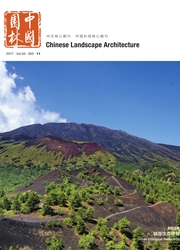

 中文摘要:
中文摘要:
洞天福地作为道教神仙思想的物化形式,在2 000多年的发展演变中,逐渐囊括了道教建筑、道教宫观及周围的园林化环境,"洞天福地"思想中所蕴含的景观理想也逐步融入社会建设中。通过梳理国内外关于洞天福地的研究成果,介绍洞天福地的发展历程、生态思想和江南洞天福地的研究现状,着重阐述了洞天福地背后承载的景观理想、文化内涵和造景手法等对传统园林营造模式的影响。指出目前研究中存在的问题,并提出未来展望。
 英文摘要:
英文摘要:
As a materialized form of the Taoist belief of immortals, "Cavern of Heaven and Place of Blessing" gradually include the Taoist architecture, Taoist temples and exterior environment with more than 2000 years development and evolution. And the landscape ideal from it has also been gradually integrated into the social construction. By reviewing literatures on "Cavern of Heaven and Place of Blessing" at home and abroad, the research condition of the development course, ecological spirit and the Jiangnan landscape characteristics are summarized. The hidden landscape ideal, cultural connotation and the influence of landscape construction mode of traditional garden are emphasized. The existing problems are analyzed, and a vision for the future is brought forward.
 同期刊论文项目
同期刊论文项目
 同项目期刊论文
同项目期刊论文
 期刊信息
期刊信息
